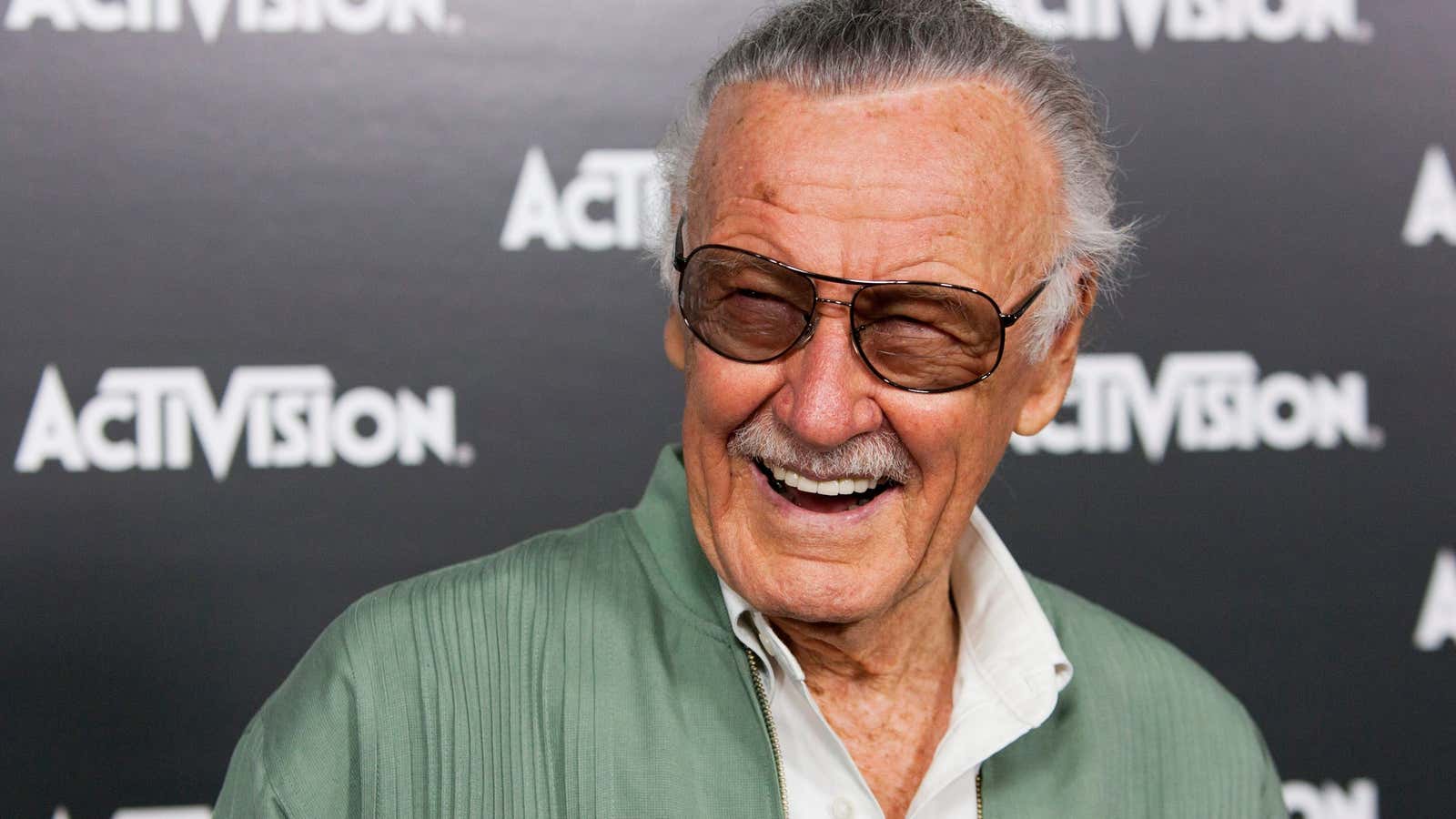Today, superhero movies are the backbone of Hollywood, and comic books, once a marginal and disposable form of entertainment, have transformed into respectable graphic novels sold in bookstores.
Movie producers and fans alike love superhero stories for their bold, vivid characters and over-the-top action. But there was a period when comics were wan, tepid things and superheroes had all but vanished, the results of attacks by a puritanical Congress and crippling self-censorship by an anxious industry. It took the ambitious imagination of Stan Lee, Jack Kirby, and their collaborators at Marvel to pull comics back from the brink, forever changed the history of mass-market entertainment.
Superhero comics as we know them debuted in 1938 with Action Comics No. 1, starring Superman. His popularity spurred dozens of other superheroes like Batman and Captain America, and gave birth to what’s now regarded as the golden age of comics. Many stories were set in World War II, and there was an explosion of titles and genres, including mystery, romance, westerns, and horror. Sales were enormous; one estimate put total comic circulation in 1949 at 750 million issues. Comics reached more people than radio, TV, or magazines.
But those numbers began to fall, first slowly as readers tired of superheroes, then abruptly in the early 1950s after the content of some comics, particularly gory horror titles like Tales from the Crypt, drew the attention of concerned parents and church groups. Eventually the US Senate—spurred in part by articles from psychiatrist Frederic Wertham, who declared that comics books were warping young minds—held two days of televised hearings (pdf) on the role of comics in promoting juvenile delinquency.
In the post-war era of McCarthyism, comics were an attractive target for grand-standing politicians eager for villains. Publishers were raided by the police, titles were outlawed in dozens of states, and some communities held public comic-book burnings, according to The Ten-Cent Plague: The Great Comic-Book Scare and How It Changed America, David Hajdu’s 2008 history of the period (paywall).
Comic sales plummeted, hundreds of artists and writers lost their jobs, and the terrified industry, fearing further government restrictions, opted to police itself. The publishers founded the Comics Code Authority, which created a standard for content along the lines of the 1930 Hollywood production code. Risqué and lurid subject matter was banned, as were depictions of creatures like werewolves and vampires. Superheroes largely vanished, save for DC’s Big Three of Superman, Batman, and Wonder Woman, whose adventures were played for laughs.
By the fall of 1961, comic books were sad, lifeless things. Four of the top five titles in the US that year featured Superman, and his “adventures” mainly involved evading Lois Lane’s attempts to learn his secret identity. The top seller was Uncle Scrooge, a comic about a rich duck.
It was in this torpid environment that DC Comics in 1960 created the Justice League of America, a collection of DC heroes who teamed up to fight crime. That title’s modest success led Martin Goodman, publisher of what later became known as Marvel, to ask his editor Stanley Lieber to create a super team of his own. Using the pen name Stan Lee, Lieber joined with ace artist Kirby to create the Fantastic Four, and comics were never the same.
Fantastic Four No. 1, which featured a squabbling family as eager to trade punches with each other as their opponents—as well as titles like The Amazing Spider-Man and The Uncanny X-Men, which soon followed—breathed new life into a genre adrift. The comic books were packed with action, the characters were flawed and human, and the stakes they fought for were big, even galactic.
Gerry Conway, a comic writer who scripted Spider-Man and dozens of other titles over five decades, described the impact of those early Fantastic Four issues in a recent blog entry:
I’ve never been hit by lightning but I have to imagine the shock might be similar to what I experienced reading that early adventure of Reed Richards, Sue Storm, her kid brother Johnny, and Ben Grimm. If you weren’t a comic book reader at that time you cannot imagine the impact those stories had. There’s nothing comparable in the modern reader’s experience of comics–nothing remotely as transformative. … Over a series of perhaps five issues, a single year, Stan and Jack Kirby transformed superhero comics in an act of creative alchemy similar to transmuting lead into gold, and just as unlikely.
Marvel’s sales skyrocketed and the comic-book renaissance Lee and Kirby ignited soon spread to their rivals at DC, who eventually abandoned whimsical plots in favor of more sophisticated stories that tackled racism and drug addiction.
Comics probably wouldn’t have disappeared entirely without the dynamism and energy injected by Lee’s Marvel heroes, but their revival was not assured, and it’s hard to imagine today’s entertainment landscape without them.
